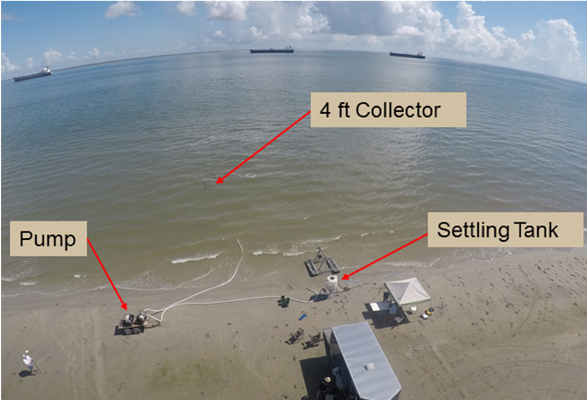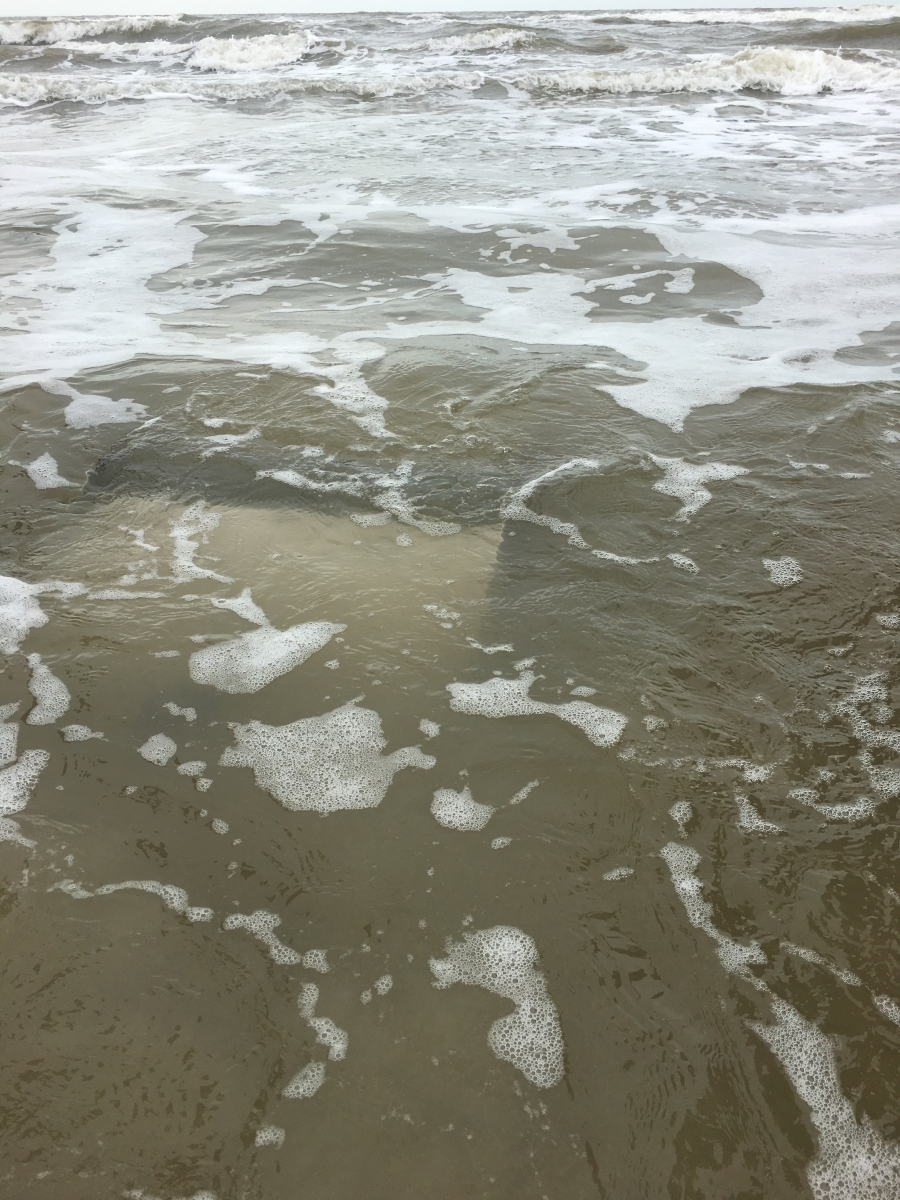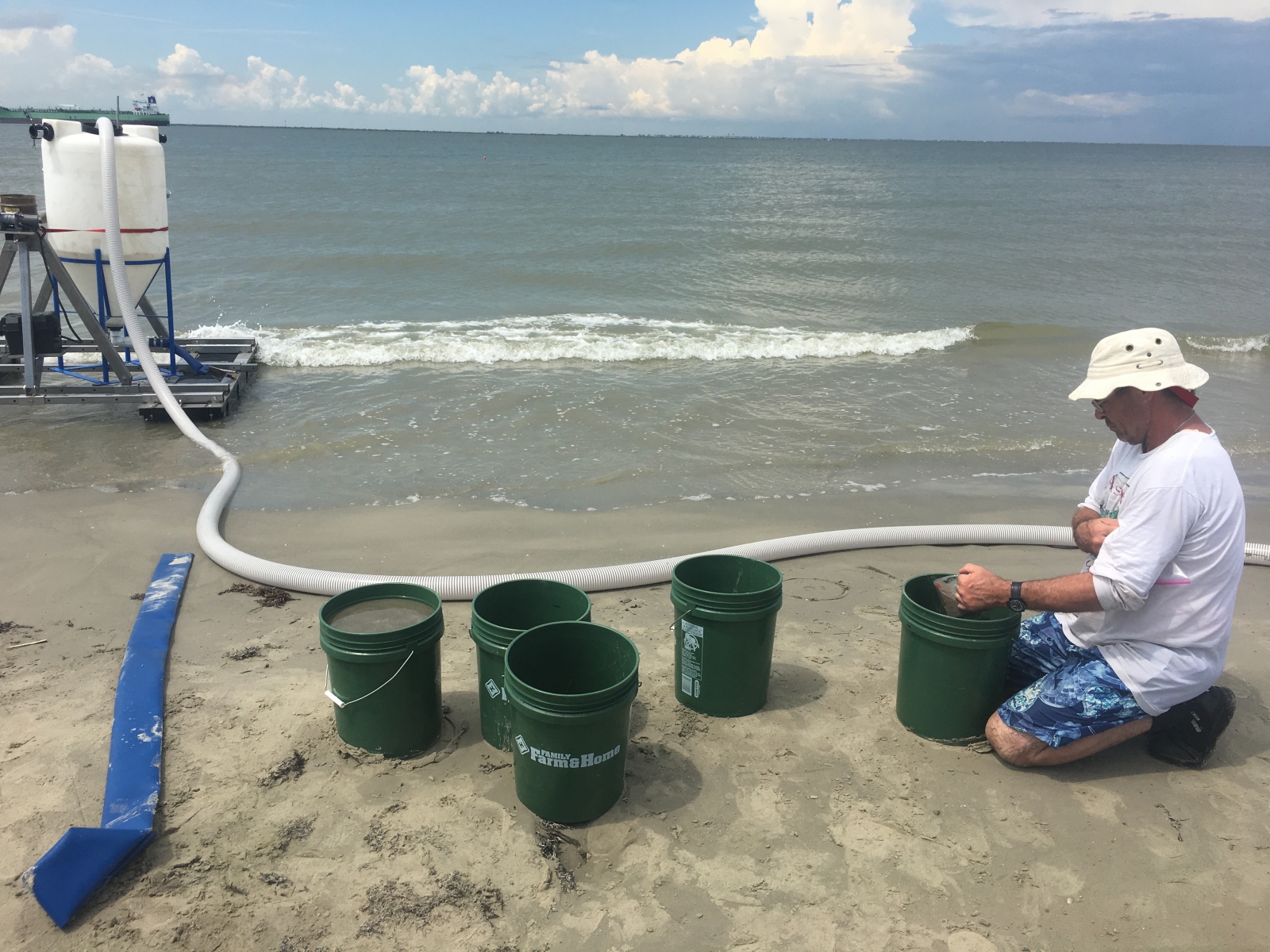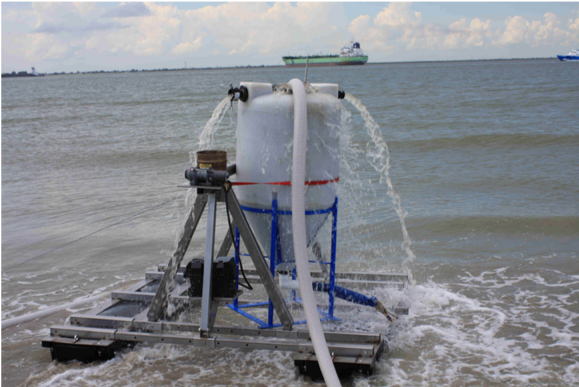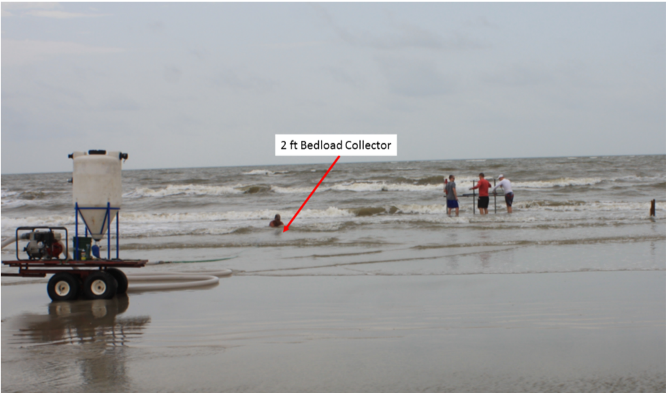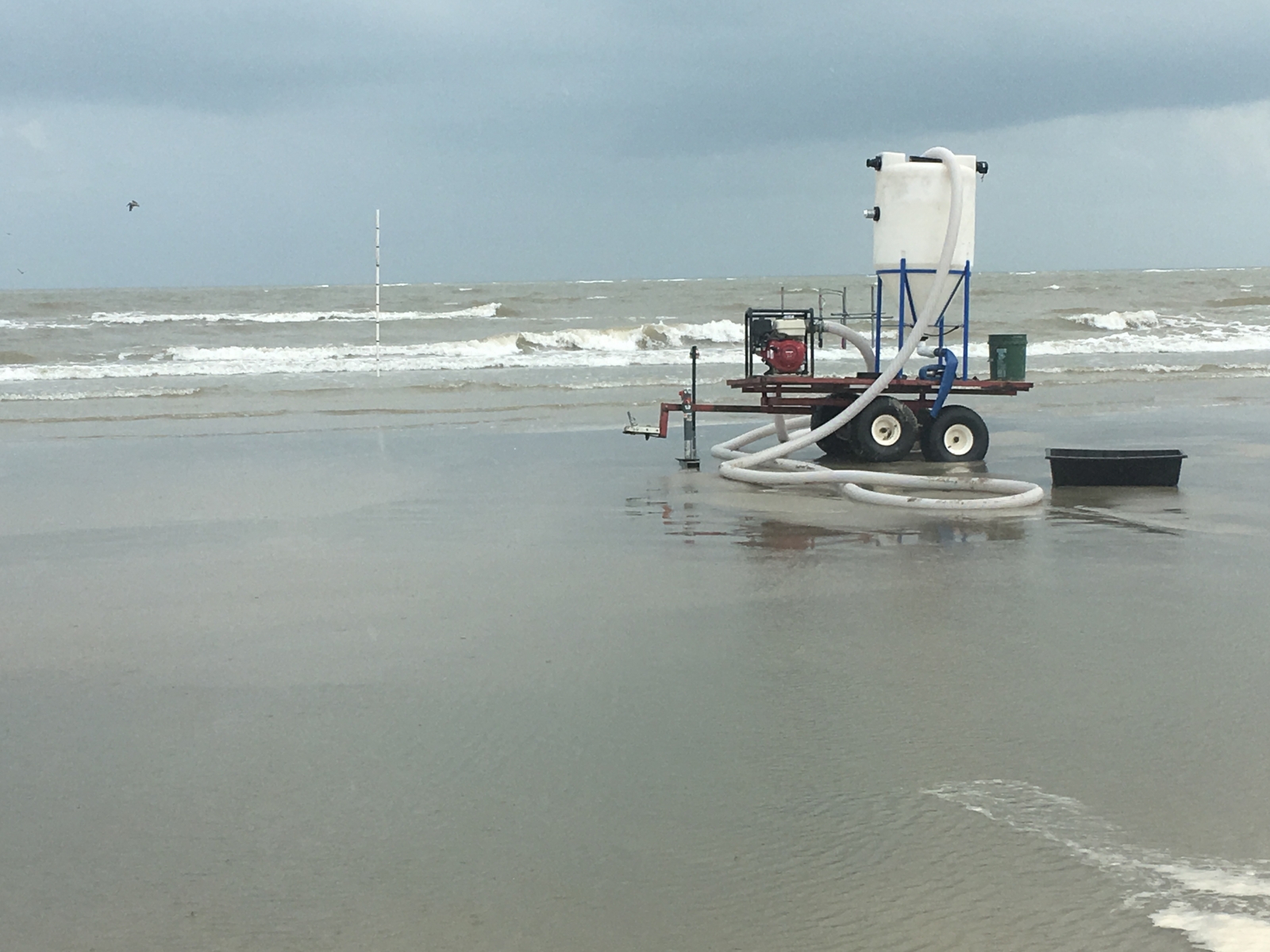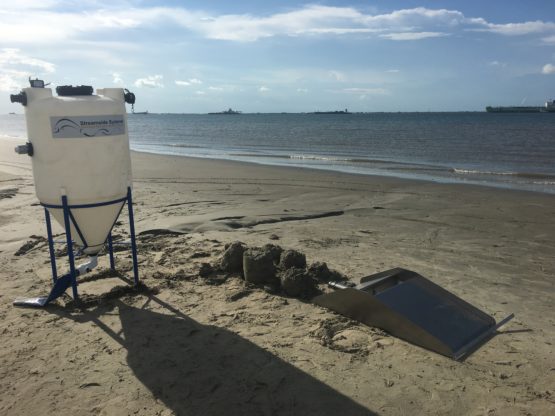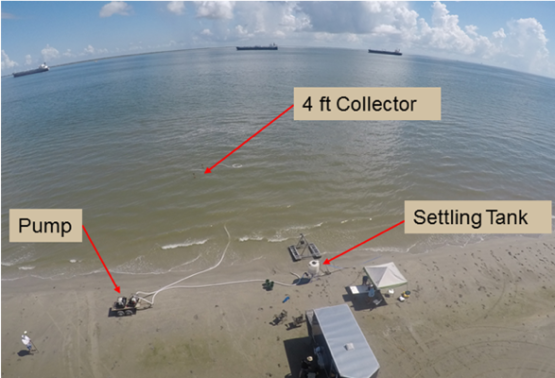Galveston Island – Coastal Sediment Collector – Phase 1
Streamside in collaboration with Freese & Nichols, Inc (FNI), Galveston Park Board, Texas General Land Office (TXGLO), USACE Galveston District, USACE ERDC, and Texas A&M, have developed modeling and performed the first phase of testing for Streamside’s Bedload Collector (Interceptor) technology. Using a series of the Bedload Sediment Collector, the Coastal and Bi-Directional Collectors, the plan is to implement a three-phase approach on Galveston Island to test, monitor and installed scalable collector systems on East Beach and Stewart Beach as initial sites to capture sediment being washed out along the Gulf coast and pumping back onto the beach for use for replenishment continuously rather than episodically with dredging.
Another part of the testing and evaluation is to test and evaluate the system for use in jettys or channels with heavy sediment loading and deposition from littoral drift that carries sediment along the shore until it reaches a jetty to block flow and create piling of the sediment. The Coastal Sediment Collectors are used for Bypassing or Backpassing these jettys to either 1) take the sediment out of flow for beneficial reuse or nourishment on the beach; or 2) keep the sediment in the flow by capturing with the collector and pumping across the jetty or channel and redistributing the sediment back into the littoral drift to prevent starving out the beach and causing sediment erosion.
Phase 1 was completed in December of 2017 and all data collection has been compiled by Streamside, USACE, Texas A&M and FNI for final reporting to USACE Galveston District, Galveston Park Board, and TXGLO. Phase 2 of full-scale engineering and design should be implemented in first to second quarter of 2019 with Phase 3 of full scale implementation to follow.
See attached report for further details on progress to date and the performance and evaluation efforts.
Streamside in collaboration with Freese & Nichols, Inc (FNI), Galveston Park Board, Texas General Land Office (TXGLO), USACE Galveston District, USACE ERDC, and Texas A&M, have developed modeling and performed the first phase of testing for Streamside’s Bedload Collector (Interceptor) technology. Using a series of the Bedload Sediment Collector, the Coastal and Bi-Directional Collectors, the plan is to implement a three-phase approach on Galveston Island to test, monitor and installed scalable collector systems on East Beach and Stewart Beach as initial sites to capture sediment being washed out along the Gulf coast and pumping back onto the beach for use for replenishment continuously rather than episodically with dredging.
Another part of the testing and evaluation is to test and evaluate the system for use in jettys or channels with heavy sediment loading and deposition from littoral drift that carries sediment along the shore until it reaches a jetty to block flow and create piling of the sediment. The Coastal Sediment Collectors are used for Bypassing or Backpassing these jettys to either 1) take the sediment out of flow for beneficial reuse or nourishment on the beach; or 2) keep the sediment in the flow by capturing with the collector and pumping across the jetty or channel and redistributing the sediment back into the littoral drift to prevent starving out the beach and causing sediment erosion.
Phase 1 was completed in December of 2017 and all data collection has been compiled by Streamside, USACE, Texas A&M and FNI for final reporting to USACE Galveston District, Galveston Park Board, and TXGLO. Phase 2 of full-scale engineering and design should be implemented in first to second quarter of 2019 with Phase 3 of full scale implementation to follow.
See attached report for further details on progress to date and the performance and evaluation efforts.

